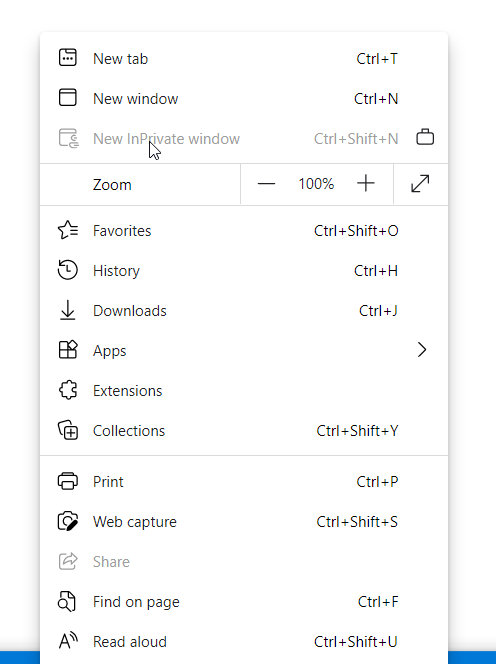Microsoft Edge Private Window
Browse InPrivate in Microsoft Edge. When you use InPrivate tabs or windows, your browsing data (like your history, temporary internet files, and cookies) isn't saved on your PC once you're done. In Microsoft Edge, select the Settings and More icon, and then New InPrivate window. You can open an InPrivate window in different ways: Right-click the Microsoft Edge logo in the taskbar and select New InPrivate window. In Microsoft Edge, right-click a link and select Open link in InPrivate window. In Microsoft Edge, select Settings and more New InPrivate window. While using Microsoft Edge, it’s easy to quickly open a new InPrivate window using a keyboard shortcut. InPrivate is a special private browsing mode that doesn’t save your local browsing history. Here’s how to do it. And it’s not just Windows, Edge is available on. The Microsoft-developed browser can be downloaded and installed on computers, phones, and tablets running Windows 10, macOS, iOS, and Android. Related: 3 Ways to Force Remove or Disable Microsoft Edge on Windows 10 It works! Microsoft Edge vs Chrome: Which one would you prefer for better privacy? If the server is on the internet, IWA requests from it are ignored by Microsoft Edge. As the documentation states; if your server/site isn't included in the AuthServerAllowedlist and Edge can't identify your site as an intranet site Edge won't use Integrated Windows Authentication.
InPrivate browsing in Microsoft Edge is similar to Chrome’s Incognito mode, which lets you browse the web without leaving behind browsing history, cookies, etc. So if you want to track online activities on a shared Windows 10 PC, you have to disable InPrivate browsing on Microsoft Edge.
Method 1: Disable Microsoft Edge InPrivate Browsing via Group Policy
- Press the Windows key + R together, type gpedit.msc in the Run box and press Enter.
- When the Local Group Policy Editor opens up, browse to the following path:
Computer Configuration > Administrative Templates > Windows Components > Microsoft EdgeOn the right side, double-click the Allow InPrivate browsing policy.
- To turn off inPrivate browsing, select Disabled, click Apply and then OK.
- Now, open your Edge browser. Click on the More actions button (three dots). When the drop-down menu appears, the option labeled New InPrivate window will appear grayed out.
Method 2: Disable Microsoft Edge InPrivate Browsing via Registry Editor

If you’re using Windows 10 Home, the Local Group Policy Editor is inaccessible, but you can still disable Microsoft Edge InPrivate Browsing using the Registry Editor.
- Open the Registry Editor and navigate to the following location:
HKEY_LOCAL_MACHINESOFTWAREPoliciesMicrosoft - Right-click on Microsoft key in the left pane and choose New -> Key, and name it MicrosoftEdge. Now right-click on the newly created key MicrosoftEdge and choose New –> Key, and name it Main.
- Select the Main key in the left, and then right-click empty space in the right pane. Select New -> DWORD (32-bit Value), name it AllowInPrivate and set its value to 0.
- Reboot your computer for the changes to take effect. Open Microsoft Edge. The New InPrivate window option should be greyed out.
If you want to turn on Microsoft Edge InPrivate browsing again, just following the same instructions above. But, change the value of AllowInPrivate from 0 to 1.


Browser In Private Mode
Related posts:
In Private Browsing Windows 10

Microsoft Edge Private Window Shortcut
